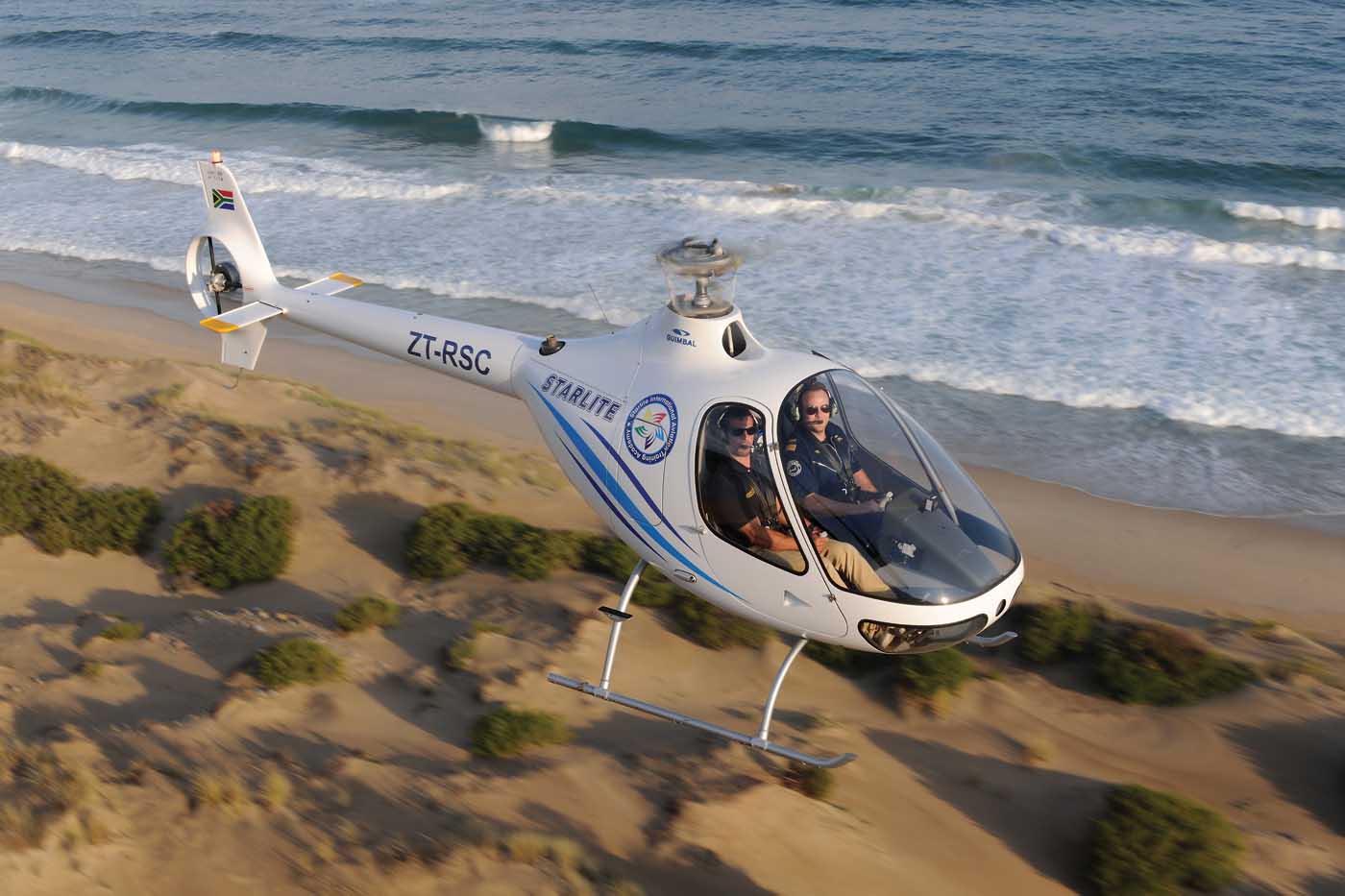Flying over 7,000 hours each year and having trained over 4,000 ab initio pilots in its 20 years of business, South Africa’s Starlite Aviation Training Academy is not only a major presence in the African helicopter market, but also in the global pilot training sector.
The company operates across two bases: a campus at Virginia airport in Durban, and another at Mossel Bay. Although both locations are on the coast, the Durban campus is based on a small but busy airfield in a controlled flying area, while Mossel Bay Airfield is in uncontrolled flying area (with a general flying area nearby).
The Starlite academy offers a full range of rotary- and fixed-wing pilot training courses, from introductory flights to private and commercial pilot licenses, type conversions, simulator training, and additional pilot training courses. The students it attracts for these courses come from around the world.
Until recently, the Robinson R22 was the mainstay of the company’s fleet, but students today are typically completing their training in a Hélicoptères Guimbal Cabri G2. Starlite received its first two Cabris in 2014, and now has a fleet of nine. The aircraft has proved a solid performer for the academy, illustrated by Starlite reaching the 10,000-flight-hour milestone with the type in just four years.
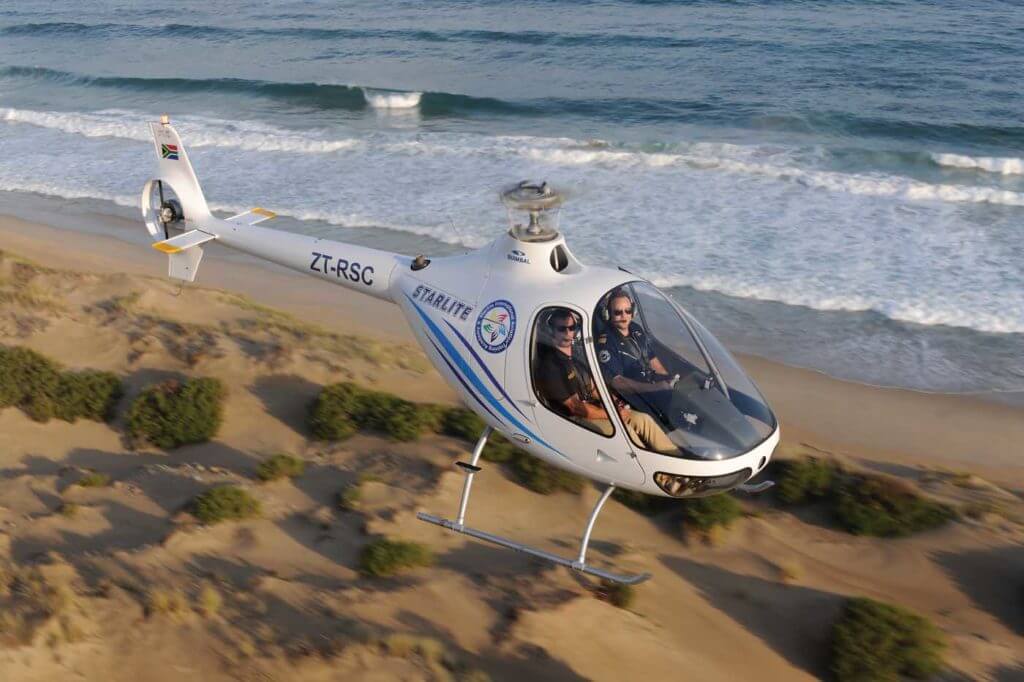
The switch in type represents a change in generation, with the Cabri offering students an aircraft and avionics developed and certified in the 2000s. Created by former Airbus Helicopters engineer Bruno Guimbal, the Cabri first took to the air in 2005, and was certified by the European Aviation Safety Agency on Dec. 15, 2007.
“Our company vision was to bring large helicopter technology into a light helicopter,” said Roland Mampe, Guimbal’s operations manager. “Our Cabri is a 2000-vintage helicopter only challenged by 40-year-old models. Technology and demand have both changed a lot — this technology is acknowledged by all Cabri users.”
The Cabri has now been sold in 19 countries (13 of which are in Europe), and the manufacturer has a growing network of agents and customers around the world, including China, Vietnam, the U.S., Brazil, and New Zealand.
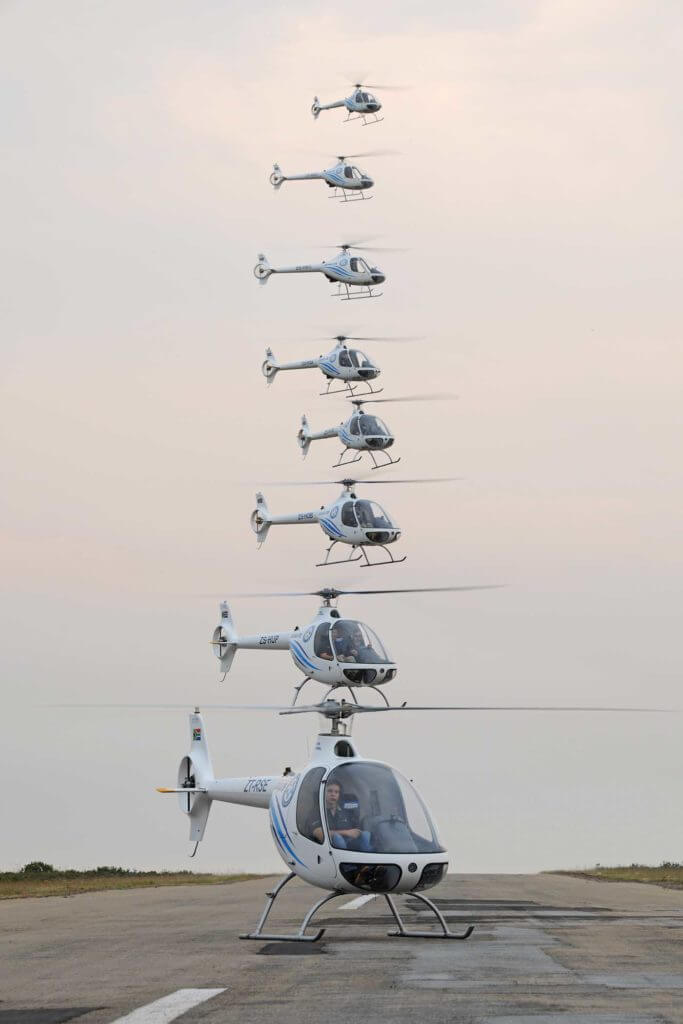
In South Africa, Starlite Aero Sales — Starlite Aviation Training Academy’s sister company — acts as Guimbal’s agent, serving as a registered dealer and service center for the company.
A modern fit
Like the R22, the Cabri is powered by a Lycoming O360 piston engine — but the more advanced, powerful and efficient J2A variant. This drives a fully articulated three-bladed main rotor and a Fenestron shrouded tail rotor.
Klara Fouché, Starlite Aviation Training Academy’s managing director, said the main factors the company considered in choosing the Cabri as its main training aircraft were safety, maintenance costs and noise sensitivity.
“With regards to safety, the aircraft exceeded our expectations,” she said. “The Cabri has unparalleled safety features for a two-seat helicopter. The three-bladed fully-articulated main rotor system eliminates any chance of mast bumping and the Fenestron makes the aircraft noticeably quieter, which is a huge advantage as we operate in noise sensitive areas.”
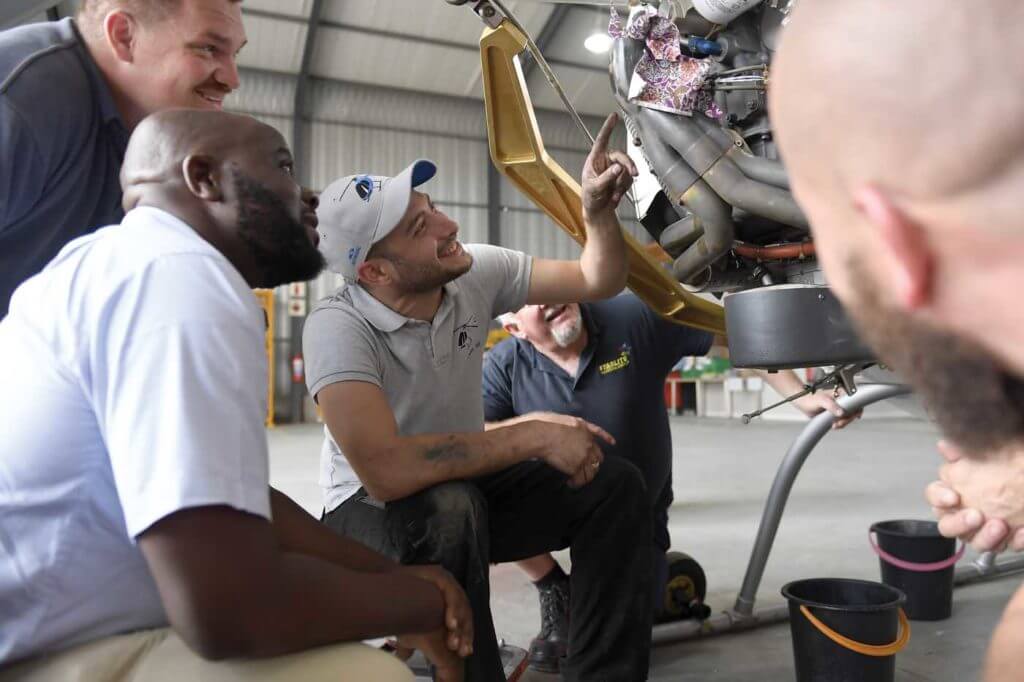
The Cabri was also designed with low maintenance costs in mind. “Only three components are time-limited on the aircraft, so the higher upfront cost will end up saving us money and downtime in the long run,” said Fouché.
The extensive use of composite materials on the aircraft also provides more benefits than just in terms of weight and strength. “Both our schools are situated close to the coast, so the G2 being made of composite material makes it corrosion-resistant,” said Fouché.
The Cabri’s ability to serve as a bridge to Airbus’s fleet was also appealing. “Adding the Cabri to our fleet of training aircraft enabled us to offer our clients an ab-initio trainer with left advancing blades, a new generation glass cockpit and EPM [electronic pilot management — a screen showing engine and rotor readouts on a single display], making for easier transition onto Airbus helicopters,” said Fouché.

For Starlite, transitioning to the more modern airframe took a little adjustment.
“Initially there were some challenges, with the instructors having to learn and understand the intricacies of the Fenestron tail rotor and the sensitive control inputs on the cyclic,” said Fouché. “But the benefits of such a system is a huge advantage, as larger helicopter types require similar control inputs. The high inertia rotor system allows for exceptional maneuverability and safety in autorotation. The articulated main rotor system eliminates the dangers associated with a teetering rotor head, making it exponentially safer in turbulent conditions and with harsh control inputs. The Fenestron is an added safety feature for ground personnel, and in confined areas the risk of tail strike is reduced.”
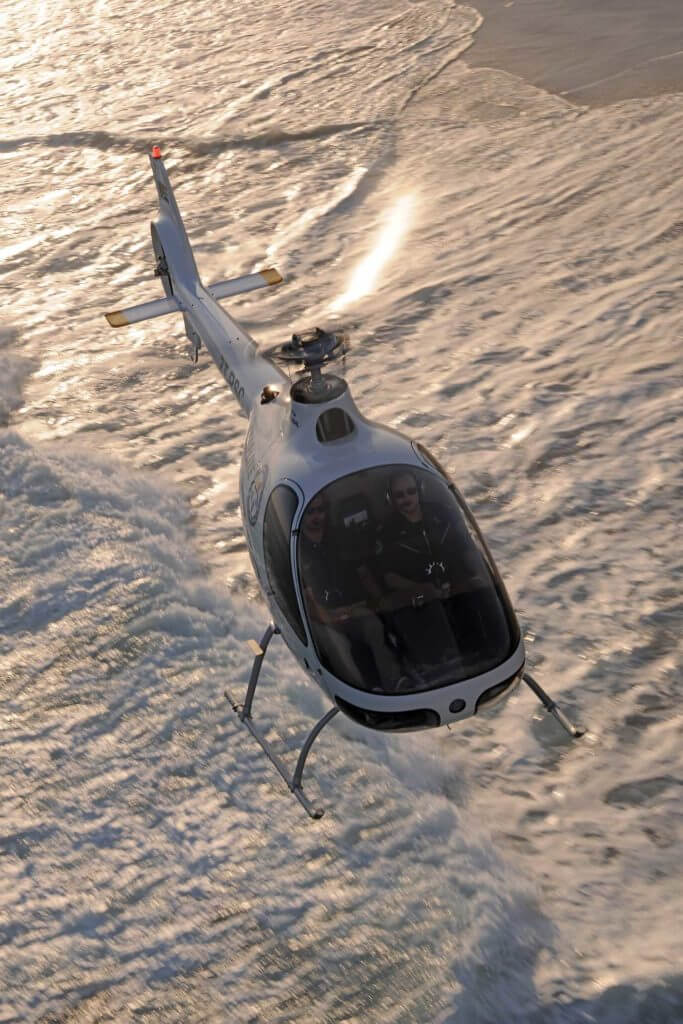
Guimbal looks ahead
South Africa promises to play an important role as Guimbal seeks to develop its global network, acting as a gateway to the continent. “In the aviation industry, South Africa is the one country reaching over most of the continent,” said Mampe. “Starlite, who has purchased 11 Cabris, provides the armed forces of its neighboring countries with full operational training, and the credit of the Cabri is now well established with the military, both in terms of quality and operating costs.”
While Mampe admitted that the private market is still playing catch-up in the region, he believes the aircraft will ultimately thrive. He said the African market is very sensitive in terms of operating costs, and believes the Cabri is well placed in this respect.
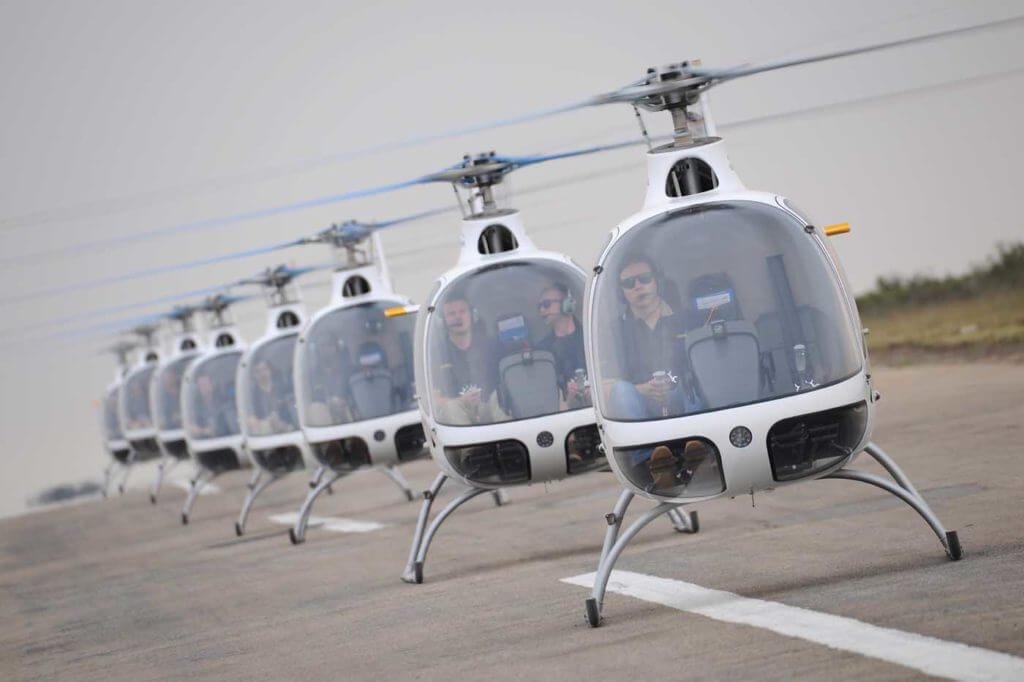
“Competition is fierce in South Africa when it comes to costs, due to price and quality always being pulled down by low-cost policies,” he said. “Starlite is doing a fantastic job standing out in quality, thanks to their high-standard operations and use of Cabris. We have shared our best knowledge with their instructors and mechanics so they can provide the best, [most] cost-efficient quality of service.”
Following the success of the Cabri, Guimbal is busy planning its next move. “The next step would be to have a big brother to our two-seater Cabri, as the market is demanding to fill the gap between the G2 and the H125,” said Mampe. “Our customers are asking us every day when we’ll release a bigger Cabri.”






